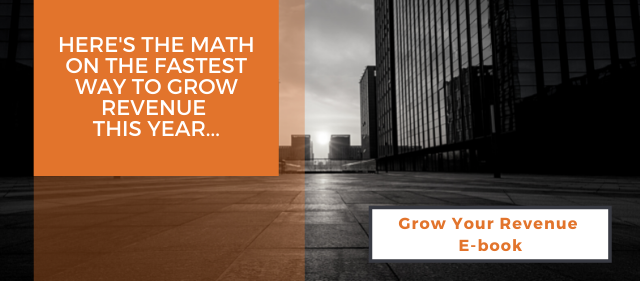SHARE
Why You Should Be Using Email Workflows for Lead Generation

Using email workflows for lead generation can save you a ton of time, make your sales team more efficient and increase the effectiveness of your email marketing.
If you’re trying to boost your inbound marketing efforts, automated email workflows are one activity you can’t afford to overlook — they attract new customers and engage existing ones on your behalf, so you can spend more time on bigger projects that matter to you.
What’s an email workflow?
Sometimes also referred to as an email series, workflows are a sequence of automated messaging based on a website visitor or email subscriber’s interactions with your website or content.
Email workflows help gather detailed information about a prospect; you provide them with relevant content specific to their needs, and they provide you with useful data about themselves.
Think of a workflow as essentially “warming up” a lead for your sales team. But this is ideal for the lead too because one reason the internet became so popular is because most people would rather read and research an idea before they speak with someone. Using email workflows makes this possible and creates a ‘win’ for the user.
Using Email Workflows for Your Business
 Your ability to set up email workflows will depend on your inbound marketing software — for example, HubSpot. If you have HubSpot Marketing Professional or Enterprise, or a HubSpot Sales Professional account, you can gain access to a library of tools to help you perfect your inbound strategy, including incorporating email workflows. (To learn more about HubSpot, read on to download our free Inbound Marketing Essentials ebook.)
Your ability to set up email workflows will depend on your inbound marketing software — for example, HubSpot. If you have HubSpot Marketing Professional or Enterprise, or a HubSpot Sales Professional account, you can gain access to a library of tools to help you perfect your inbound strategy, including incorporating email workflows. (To learn more about HubSpot, read on to download our free Inbound Marketing Essentials ebook.)
3 Ways Email Workflows Help Lead Generation
Using email workflows can help lead generation and better utilize data collected through your website in a multitude of ways, but here are 3 major ones:
- Welcome, Engage and Re-Engage Subscribers and Customers: Nurture leads cultivated from your website by sending them a welcome email when they subscribe or sign up. Then, provide additional content offers when they download a whitepaper or make a purchase. Follow this up by a Call To Action to update subscription preferences, or check out new offers (if a prospect hasn’t opened an email or engaged with your website after a certain period of time).
- Segment Subscribers and Customers Based on Stage of Buyer’s Journey: Based on website analytics, email marketing stats and other data gathered by your CRM (customer relationship management) — or whichever system you use to organize contacts and leads — email workflows allow you to automatically separate prospects into segmented lists representative of their relative position in the buyer’s journey. For instance, email newsletter subscribers who have signed up within the past week can be presumed to be in the awareness stage, and can be sent relevant content as such.
- Move Prospects Down the Funnel: After your subscribers have been segmented, email workflows allow you to send them an automated series of messages that can encourage prospects to become customers. For example, if someone has downloaded a certain number of whitepapers from your website, you can automatically include this prospect in an email workflow about opportunities to purchase a report, or related product.
Focus on Inbound Marketing to Identify Which Email Workflows are Right for You
Setting up email workflows that will give you the best results is easier when you understand the ins and outs of inbound marketing. You might also consider partnering with an inbound marketing and content creation agency — like Tangible Words — to help you achieve your goals.
Topics
- Content Creation (297)
- Growth-Driven Design Websites (166)
- Inbound Marketing (139)
- Sales Growth (117)
- Tangible Words (110)
- Search Engine Optimization (85)
- Social Media Marketing (83)
- Blogging for Business (75)
- Economic Development (65)
- Hubspot (61)
- Events & Training (60)
- Company Growth Podcast (49)
- Manufacturing (47)
- Tourism (46)
- Email Marketing (41)
- Case Stories (39)
- Testimonials & Client Feedback (36)
- Education and SaaS (25)
- Google (21)
- Careers (17)
- FAQ (16)
- Inbound Marketing Agency (16)
- Alysha Dominico (13)
- Cool Companies (12)
- Associations (7)
- Food and Beverage (7)
TW Blog Sign-Up
Learn more about how to grow your business and improve your sales team process.




